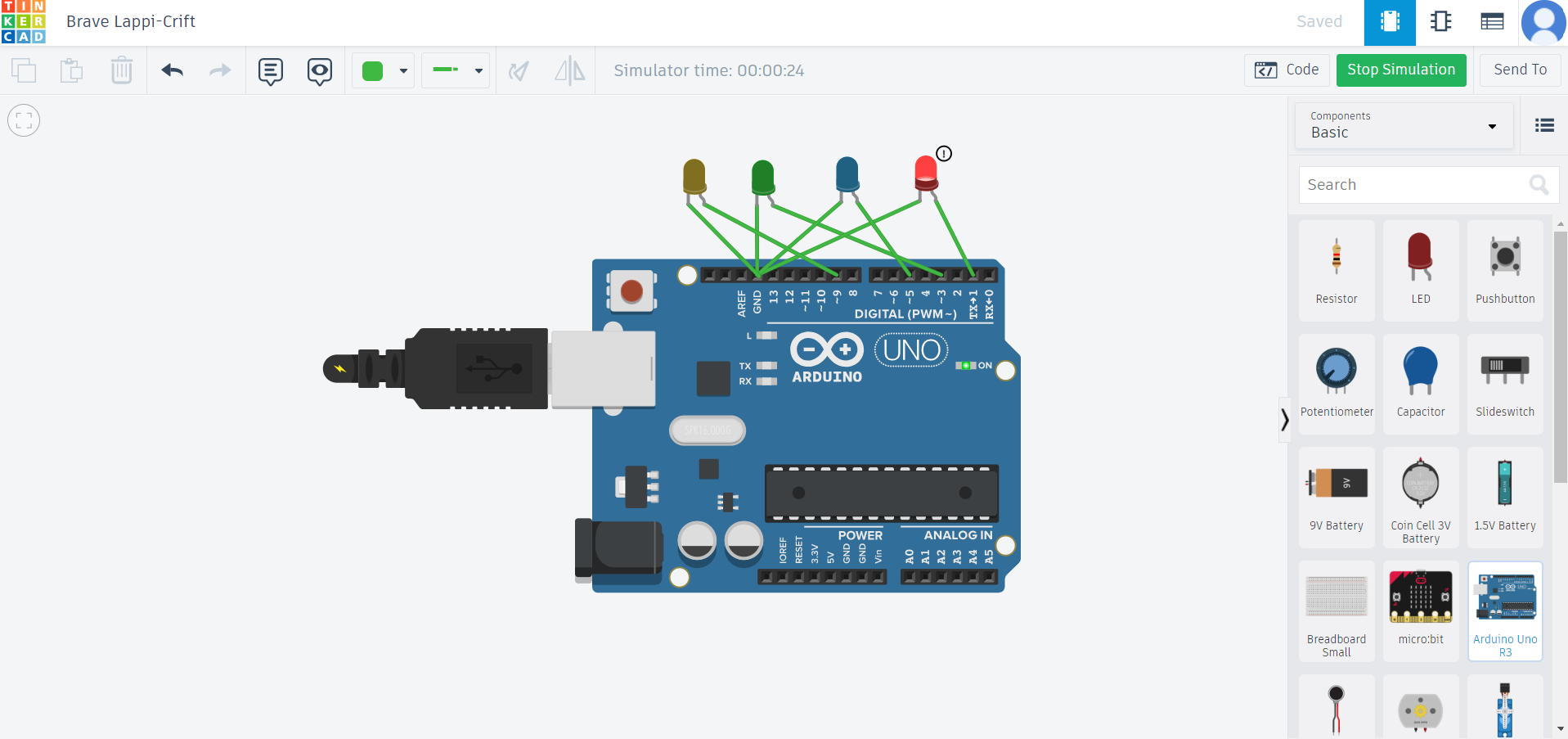Diving into IoT with Tinkercad
 Srinidhi Chitti
Srinidhi ChittiHihihi! Welcome back! So, byte-a, there is a lot of hungama on different technologies. Notice the prevailing trends: AI, VR, AR, 3D printing, and the Cloud—all crucial pillars of Industry 4.0. Today, however, we shift our focus to another integral part: IoT, the Internet of Things.
Apart from being the fancy stream some of my friends pursue, IoT is a branch of CS that deals with how devices connect to perform a task. Gone were the days when we interacted with devices with our fingers. Now, everything is automated. AC shuts itself down in an hour. That is IOT. Your super cool workout regime? Hold your breath! IoT is used in tracking your watches. ALEXA! Turn off the lights, please! That is IOT. Most of our everyday appliances use IOT- Smart refrigerators. BS1, BS2, BS4, etc., are the emission forms for pollution; single sensors are embedded in them.
IoT connects you to a real-time world for operation.
How does it achieve this?
Sensors! Sensors play a crucial role in IoT by detecting physical phenomena such as signals or temperature changes and transmitting this data to other devices. To connect devices with each other we need tada! Internet! Internet connectivity is essential for this data transmission. Finally, once data is transmitted, data processing shoudl happen which microcontrollers do. Microcontrollers process the received data, completing the data acquisition, transmission, and processing cycle in IoT systems. These are the essential components of IOT.
However, the problem with IoT is that there needs to be more security, and maintenance of sensors needs to be done.
But that doesn't stop us from exploring.
Today, we will build our own IoT connections.
For this we will use Autodesk's TinkerCad online simulator. This approach is the best start because you will learn out of necessity. Create an account, go to the circuit design section, and make a project. You will have a section of components towards the right side of your screen. You can play around with the connections and components and build your circuit. After you finish it, you can check the code that works with it. We are now working on C++. You can refer to my board- https://www.tinkercad.com/things/3uaqGXvKIq3-brave-lappi-crift

The board we used above is Arduino Uno 3. It has 20 pins- 14 digital pins and six analog pins. It also has PWM- Pulse with Modulation. It is a technique for getting variable voltage data into digital data, i.e., analog signals into digital signals.
Going into the basics of what Analog and digital signals are. Analog signals are continuous signals whose values range from 0-360, whereas digital signals are discrete signals and their values range from 0-1. So, the logic on the board is that instead of dealing with a continuous voltage signal, you convert it into a series of steps for the data to be dealt with.
Also, the voltage limits on the input and output pins are 0-5V.
Other components include LED. The LED terminals vary, depending on whether they are 2 or 3. To determine which an anode or cathode is, the giant filament inside is -, and the shorter filament inside is +. Outside, the larger is the Anode and the shorter is the cathode. In the above circuit, the Anode of the LED is connected to one of the 14pins and the cathode to the GND.
If you refer to your code after your simulation, it will be in this format.
void setup()
{ pinMode(D2, OUTPUT);
pinMode(D4, OUTPUT);
}
// declaration is done above
void loop() {
digitalWrite(D2, HIGH); delay(1000);
digitalWrite(D2, LOW); delay(1000);
digitalWrite(D4, HIGH); delay(1000);
digitalWrite(D4, LOW); delay(1000);
}
// logic is fitted in the loop
This is it for today. Next time, we will build circuit boards with actual components and debug them on Arduino platforms.
Till then, Tech Talk Time Ticks, Code Connections Click.
Subscribe to my newsletter
Read articles from Srinidhi Chitti directly inside your inbox. Subscribe to the newsletter, and don't miss out.
Written by

Srinidhi Chitti
Srinidhi Chitti
Namaste! I am Srinidhi Chitti, a first-year CSE student at GITAM University Vizag, an extroverted individual who thrives on connections and continuous learning. With academic achievements like an IEO gold medal, IEEE Kahoot, and victories in essay competitions, my passion extends to writing. Beyond my love for engaging in stimulating conversations, I am naturally inclined to write. My words flow effortlessly, painting vivid pictures and evoking powerful emotions. I channel my creativity into crafting poems, which serve as a beautiful medium for self-expression. Moreover, my passion for writing extends beyond personal endeavors. I selflessly dedicate my time to volunteer at GDG (Google Developers Group) and WTM (Women Techmakers) Vizag, contributing to content creation and other technology initiatives. These experiences have sharpened my writing skills and deepened my understanding of the technical landscape.Since my early years in 5th grade, I have been captivated by the power of words and the enchantment of literature. This infatuation with reading and writing poetry paved the way for my development as a budding writer. During my time as a volunteer, I have worked diligently to ensure the success of these events, collaborating with a diverse team and executing a range of responsibilities. These experiences have not only enhanced my organizational and leadership skills but also provided me with invaluable insights into the dynamic world of technology and its transformative potential.